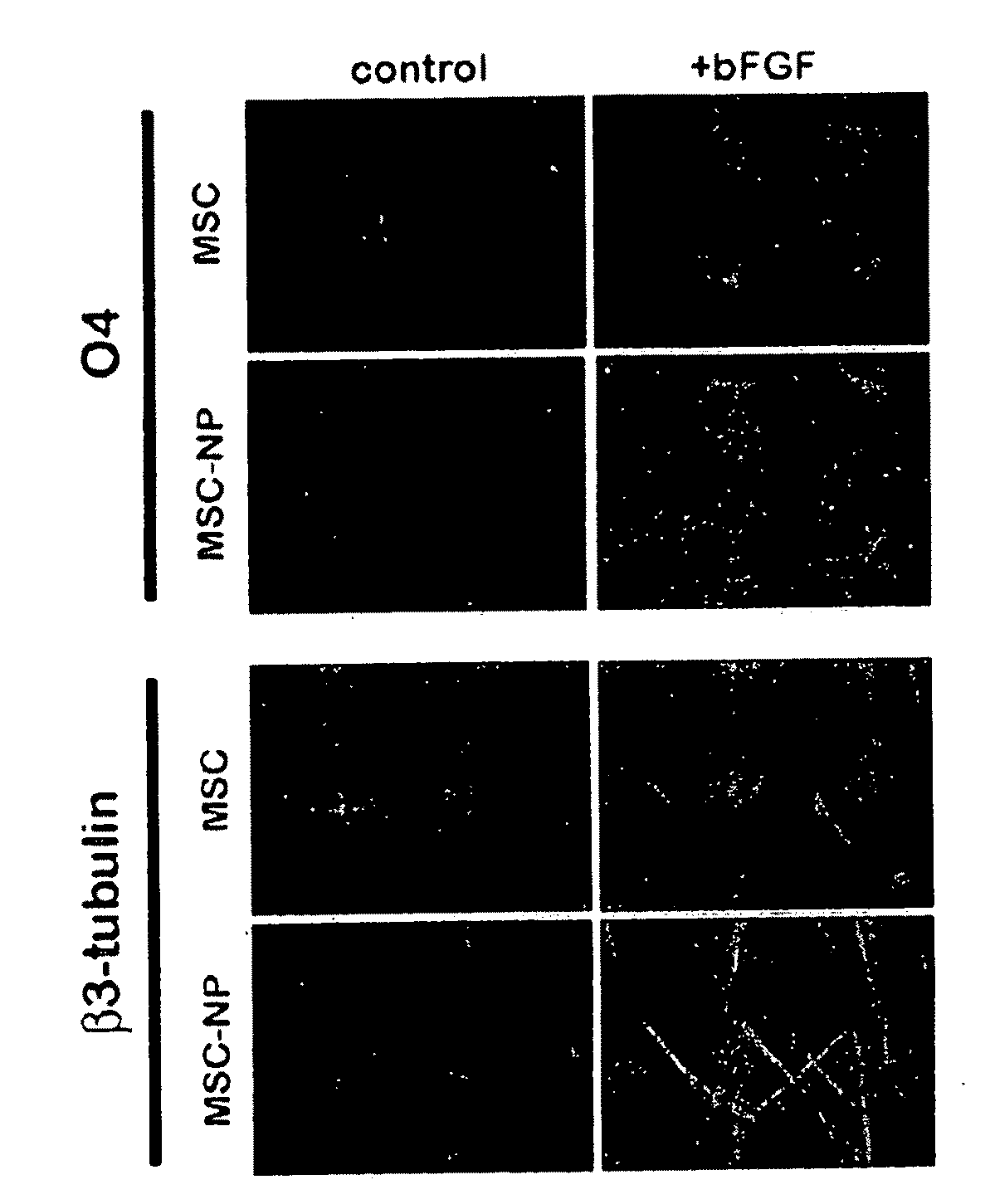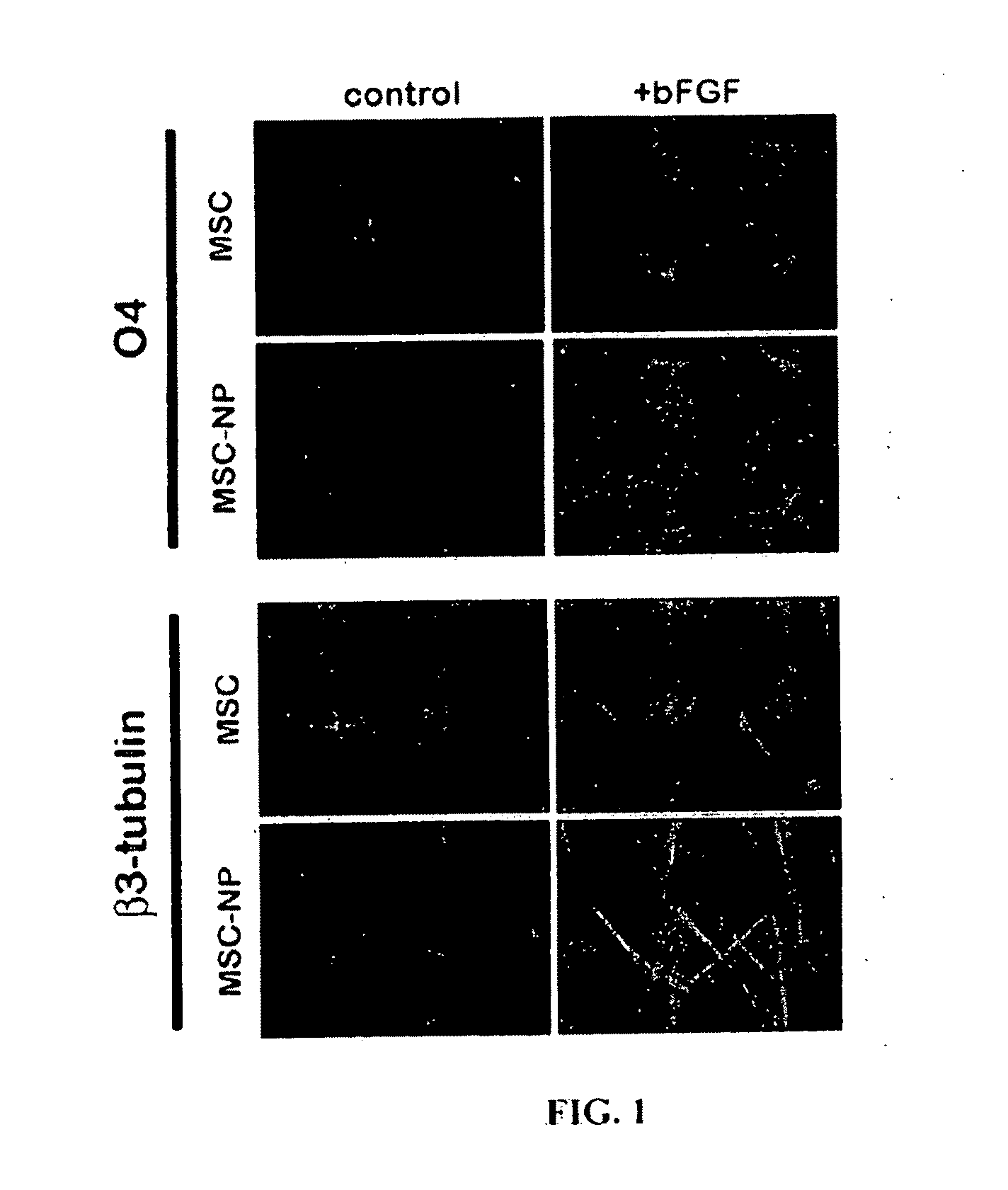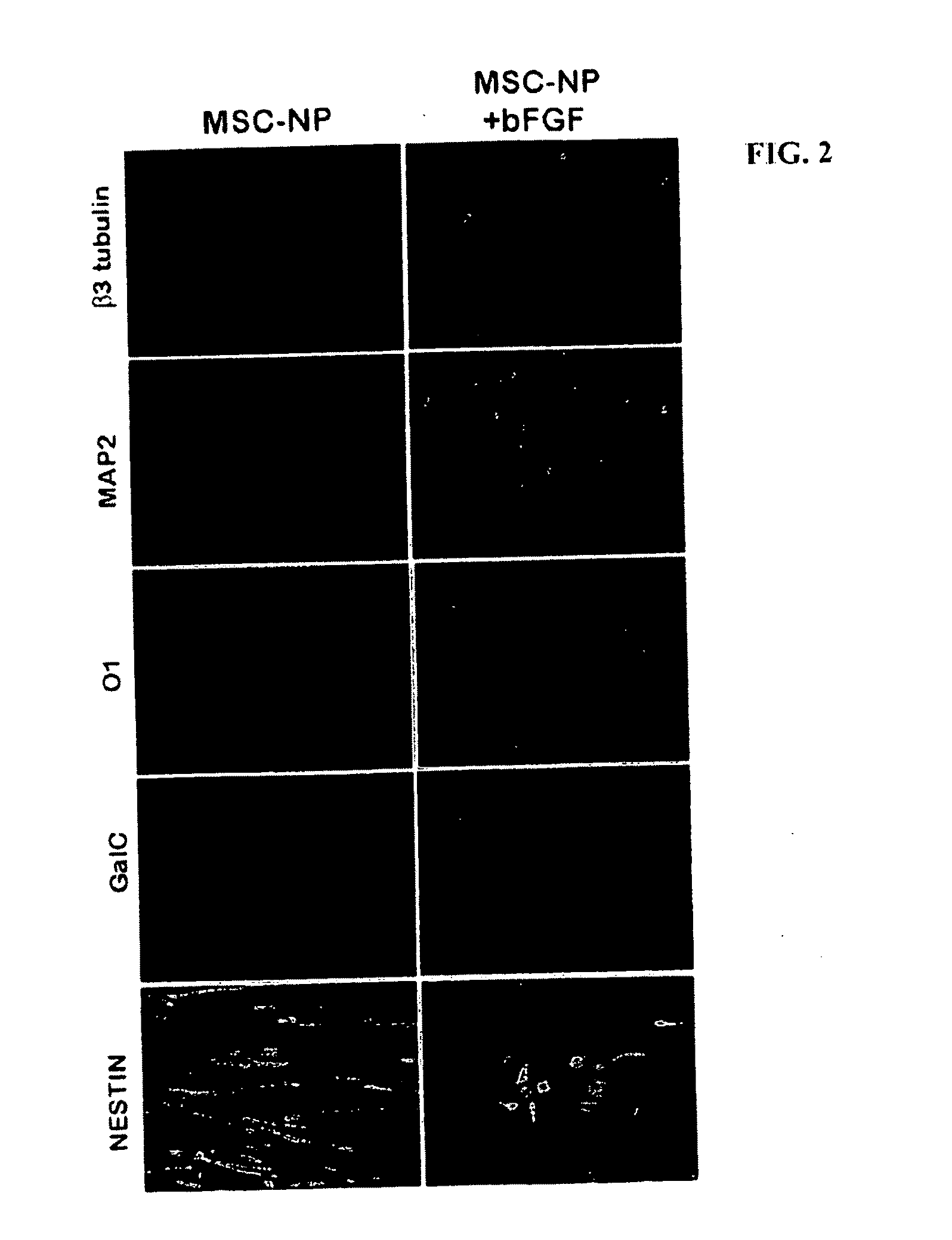Bone marrow-derived mesenchymal stem cells as a source of neural progenitors
a technology of mesenchymal stem cells and bone marrow, which is applied in the direction of skeletal/connective tissue cells, drug compositions, immunological disorders, etc., can solve the problems of only partially effective therapies in slowing down the progressive phase, possible transplant rejection, and reduced nerve conduction, etc., to achieve the effect of treating and/or reducing the severity of multiple sclerosis
- Summary
- Abstract
- Description
- Claims
- Application Information
AI Technical Summary
Benefits of technology
Problems solved by technology
Method used
Image
Examples
Embodiment Construction
[0036]Multiple sclerosis patients typically experience progressive neurological decline due to prolonged autoimmune attack, failure of endogenous remyelinating mechanisms, and axonal loss. The use of autologous MSC-derived neural precursor cells is aimed at reversing the neurodegeneration that occurs in MS through repair and regeneration of damaged cells. Preclinical studies in animals demonstrate that MSC-based therapies have significant benefit in models of CNS injury and demyelinating disease. Clinical trial data has shown that MSC administration is safe and well tolerated, however MSC-derived neural precursor cells have not been used in clinical trials. Furthermore, clinical trials with MS and ALS patients suggest that MSCs may have some therapeutic benefit. The present invention is thus directed to elucidating the safety, tolerability, dosing and efficacy of intrathecal injections of autologous MSC-derived neural precursor cells in MS patients. This treatment could reverse neur...
PUM
| Property | Measurement | Unit |
|---|---|---|
| concentration | aaaaa | aaaaa |
| time | aaaaa | aaaaa |
| time | aaaaa | aaaaa |
Abstract
Description
Claims
Application Information
 Login to View More
Login to View More - R&D
- Intellectual Property
- Life Sciences
- Materials
- Tech Scout
- Unparalleled Data Quality
- Higher Quality Content
- 60% Fewer Hallucinations
Browse by: Latest US Patents, China's latest patents, Technical Efficacy Thesaurus, Application Domain, Technology Topic, Popular Technical Reports.
© 2025 PatSnap. All rights reserved.Legal|Privacy policy|Modern Slavery Act Transparency Statement|Sitemap|About US| Contact US: help@patsnap.com



